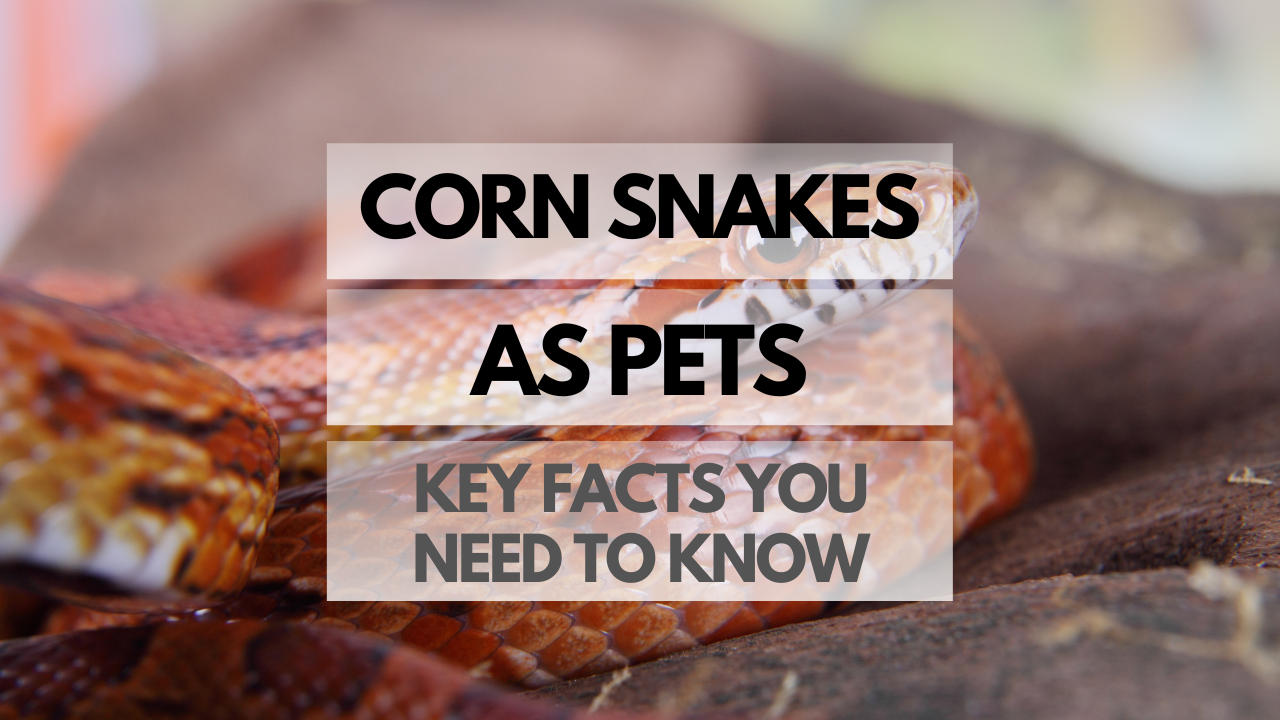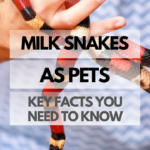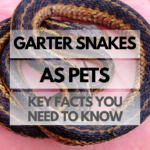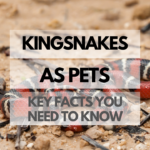Corn snakes, native to North America, have become increasingly popular as pets due to their beautiful colors, docile nature, and relatively easy care requirements. In this article, we’ll explore everything you need to know about keeping corn snakes as pets, including their history, cost, and proper care.
Quick Reference Table: Corn Snake Facts
| Attribute | Details |
|---|---|
| Scientific Name | Pantherophis guttatus |
| Average Lifespan | 15-20 years |
| Size | 3-6 feet (0.9-1.8 meters) |
| Level of Care | Beginner |
| Behavior | Docile, easy to handle |
| Diet | Carnivorous (rodents) |
| Temperature | 75-85°F (24-29°C) |
| Humidity | 40-60% |
How Are Corn Snakes as Pets?
Corn snakes make excellent pets, particularly for first-time snake owners. They are generally docile, easy to handle, and low-maintenance compared to other snake species. Their attractive colors and patterns make them fascinating pets to observe and care for.
Pros and Cons of Corn Snakes
Pros:
- Docile and easy to handle
- Low-maintenance care requirements
- Attractive colors and patterns
- Generally healthy with few health issues
- Readily available from breeders and pet stores
Cons:
- Require a secure enclosure to prevent escape
- Some individuals may be more nervous or defensive
- Feeding live or frozen rodents may be off-putting for some owners
Corn Snake Behavior and Temperament
Corn snakes are generally docile and easy to handle, making them suitable for beginners. They are curious and active during the day, providing entertainment for their owners. While some individuals may be more nervous or defensive, proper handling and care can help them become more comfortable with human interaction.
How Much Do Corn Snakes Cost?
A corn snake’s initial cost ranges from $30 to $100 or more, depending on the morph and breeder. The setup costs, including an enclosure, heating and lighting, and accessories, can range from $100 to $300. Ongoing expenses include food, substrate, and electricity for heating and lighting.
Corn Snake Lifespan: Time and Commitment
Corn snakes have a life expectancy of 15-20 years, making them a long-term commitment. Regular care, including feeding, cleaning, and handling, is required to keep your corn snake healthy and comfortable throughout its life.
Corn Snake Size
Adult corn snakes typically reach a length of 3-6 feet (0.9-1.8 meters). Males are generally smaller than females, with a more slender body shape.
Corn Snake Species
While there is only one species of corn snake (Pantherophis guttatus), there are numerous color and pattern morphs available due to selective breeding.
Corn Snake Colors, Looks and Appearances
Corn snakes display a wide range of colors and patterns, including red, orange, brown, and black. Their patterns can vary from saddles and blotches to stripes and even completely patternless individuals. Popular morphs include albino, anerythristic, and snow corn snakes.
Corn Snake Care Guide
Proper care for your corn snake involves setting up an appropriate habitat,feeding a balanced diet, and ensuring their health and comfort. Let’s delve into the specifics of corn snake care.
Corn Snake Habitat: Tank and Housing
A well-designed habitat is essential for your corn snake’s well-being. This includes choosing the right tank size, enclosure type, and providing the necessary heating, lighting, and furnishings.
Appropriate Corn Snake Tank Size
A 20-gallon tank is suitable for juvenile corn snakes, while adults require a 40-gallon tank or larger. Ensure the enclosure has a secure lid to prevent escapes.
Types of Enclosures
Glass aquariums, plastic tubs, and PVC enclosures are all suitable options for housing corn snakes. Each type has its advantages and disadvantages, so choose the one that best fits your needs and preferences.
Substrate Options
Aspen shavings, cypress mulch, and coconut coir are popular substrate choices for corn snakes. These substrates help maintain humidity and provide a comfortable surface for your snake to move on.
Heating and Lighting Requirements
Corn snakes require a temperature gradient of 75-85°F (24-29°C) with a basking area of 90°F (32°C). Under-tank heating pads or heat tape can be used to achieve the desired temperatures. Lighting is not strictly necessary, but a natural day/night cycle can be beneficial to your snake’s well-being.
Humidity and Temperature Control
Monitor the humidity and temperature in your corn snake’s enclosure with a thermometer and hygrometer. Maintain humidity levels of 40-60% by misting the enclosure and providing a large water dish.
Furnishings and Decorations
Provide your corn snake with hiding spots, such as caves or hide boxes, and climbing opportunities, like branches or ledges. These furnishings offer security and enrichment for your pet.
Cleaning and Maintenance
Spot-clean the enclosure daily by removing feces and soiled substrate. Perform a full enclosure cleaning and substrate replacement every 4-6 weeks to maintain a healthy environment.
Corn Snake Food: Diet and Nutrition
Corn snakes are carnivorous, primarily consuming rodents as their primary food source. Feeding an appropriate diet is crucial for your snake’s health and growth.
Feeding Frequency and Schedule
Feed juvenile corn snakes every 5-7 days and adult corn snakes every 10-14 days. Adjust feeding frequency based on your snake’s growth, body condition, and behavior.
What do Corn Snakes Eat?
Corn snakes eat primarily rodents, such as mice and small rats. Frozen-thawed rodents are recommended for their safety, convenience, and nutritional value.
Corn Snake Treats
Occasionally offering a small quail or chick can provide variety in your corn snake’s diet. However, these should be given sparingly and should not replace rodents as their primary food source.
Foods to Avoid
Do not feed your corn snake wild-caught prey, as it can carry parasites and diseases. Additionally, avoid feeding insects or other non-rodent food items, as they do not meet the nutritional needs of corn snakes.
Supplements and Vitamins
Corn snakes typically do not require supplements or vitamins if fed an appropriate diet of frozen-thawed rodents. Consult with a veterinarian if you have concerns about your snake’s nutritional needs.
Hydration
Provide your corn snake with a large water dish for drinking and soaking. Ensure the water is clean and fresh, replacing it daily or as needed.
Handling and Socialization
Proper handling and socialization are essential for building a positive relationship with your corn snake and ensuring their well-being.
Taming and Bonding
Begin taming and bonding with your corn snake by allowing them to acclimate to their new environment for a week before handling. Start with short, gentle handling sessions and gradually increase the duration as your snake becomes more comfortable.
Safe Handling Techniques
When handling your corn snake, support their body with both hands and avoid gripping them tightly. Never handle your snake by the head or tail, as this can cause injury or stress.
Signs of Stress and Illness
Signs of stress in corn snakes may include hissing, tail rattling, or attempting to escape. If your snake is showing these signs, give them time to calm down before attempting to handle them again. Signs of illness may include lethargy, loss of appetite, or unusual behavior. Consult a reptile veterinarian if you suspect your snake may be unwell.
Introducing Corn Snakes to Other Pets
Introducing corn snakes to other pets should be done cautiously, as not all animals may be compatible. Supervise all interactions closely and separate the animals if signs of stress or aggression are observed.
Health and Wellness
Ensuring your corn snake’s health and wellness involves recognizing common health issues, providing preventative care, and finding a qualified reptile veterinarian.
Common Health Issues
Some common health issues affecting corn snakes include respiratory infections, mites, and digestive problems. Regular check-ups with a reptile veterinarian can help mitigate these issues.
Signs of a Healthy Corn Snake
A healthy corn snake will have clear eyes, smooth skin, and a strong appetite. They should be active and alert, with no signs of lethargy or unusual behavior.
Preventative Care
Preventative care for corn snakes includes maintaining a clean and appropriate habitat, feeding a balanced diet, and monitoring their health through regular check-ups with a reptile veterinarian.
Finding a Reptile Veterinarian
Find a qualified reptile veterinarian through referrals from other reptile owners, online directories, or by contacting local herpetological societies.
Breeding and Reproduction
Breeding corn snakes requires knowledge of their reproductive behavior, proper care of gravid snakes, and attention to the incubation and care of hatchlings.
Determining Gender
Gender determination in corn snakes can be challenging, as they lack external sexual characteristics. A veterinarian or experienced breeder can perform a process called probing to accurately determine your snake’s gender.
Mating Behavior and Courtship
Corn snakes mate in the spring or early summer, with males actively seeking out receptive females. Courtship involves the male rubbing his body against the female and aligning their tails for copulation.
Gravidity and Egg-laying
Gravid corn snakes will exhibit swelling in their abdomen and may become more reclusive. Provide a suitable egg-laying site, such as a moist hide box, for the female to deposit her eggs.
Incubation and Hatching
Incubate corn snake eggs at a temperature of 78-82°F (25-28°C) with a humidity of 70-80%. Hatching typically occurs 60-65 days after egg-laying, with hatchlings emerging from their eggs over a period of several hours to a day.
Caring for Hatchlings
House hatchling corn snakes individually in small, secure enclosures with appropriate heating, lighting, and hiding spots. Feed them appropriately sized rodents every 5-7 days.
Are Corn Snakes Legal?
Corn snakes are legal in most areas, but local regulations may vary. Always check your state or country’s laws and regulations regarding the ownership of corn snakes as pets.
Popular Names for Corn Snakes
Fun and interesting names for corn snakes might include:
- Cornelius
- Maize
- Amber
- Slinky
- Spike
- Stripes
- Rusty
- Sherbet
Conclusion: Should YouOwn Corn Snakes as Pets?
When cared for properly, corn snakes can make fascinating and rewarding pets. They are relatively easy to care for, making them suitable for both beginner and experienced reptile keepers. Before owning a corn snake, ensure that you are prepared to provide the necessary care and attention, and always practice responsible ownership.
FAQ for Pet Corn Snakes
- Q: Are Corn Snakes good pets?
- A: Yes, corn snakes make good pets due to their relatively docile nature and ease of care. They are suitable for both beginner and experienced reptile keepers.
- Q: Can Corn Snakes eat grapes, bananas, strawberries, apples, spinach, tomatoes, carrots, cucumbers, watermelon, broccoli, blueberries, celery, cabbage, cilantro, kale, blackberries, oranges, avocados, corn, or asparagus?
- A: No, corn snakes are obligate carnivores and should only be fed a diet of appropriately sized rodents.
- Q: How often do Corn Snakes eat?
- A: Corn snakes typically eat every 5-7 days for juveniles and every 10-14 days for adults.
- Q: How long do Corn Snakes live?
- A: Corn snakes have an average lifespan of 15-20 years in captivity when provided with proper care.
- Q: Where are Corn Snakes native?
- A: Corn snakes are native to the southeastern United States, including regions such as Florida, Georgia, and South Carolina.
- Q: Are Corn Snakes friendly?
- A: Corn snakes are generally docile and tolerate handling well when properly socialized.
- Q: Do Corn Snakes bite?
- A: While corn snakes can bite, it is uncommon for them to do so unless they feel threatened or mistake a hand for food.
- Q: Do Corn Snakes like to be held?
- A: Corn snakes can become accustomed to handling and may tolerate it well when properly socialized, but it is important to handle them gently and avoid stressing them.
- Q: Are Corn Snakes nocturnal?
- A: Corn snakes are primarily crepuscular, meaning they are most active during dawn and dusk hours.
- Q: Do Corn Snakes pee?
- A: Corn snakes excrete a combination of solid waste and uric acid, which is a solid, white substance that serves the same purpose as urine in mammals.
- Q: Do Corn Snakes hibernate?
- A: In the wild, corn snakes may brumate, which is a period of reduced activity in response to cold temperatures. In captivity, brumation is not necessary for their well-being.
- Q: Do Corn Snakes make noise?
- A: Corn snakes are generally silent, but they may hiss if they feel threatened.
- Q: Are Corn Snakes venomous or poisonous?
- A: Corn snakes are neither venomous nor poisonous. They are non-venomous constrictors that subdue their prey by constriction.
- Q: Are Corn Snakes smart?
- A: While it is challenging to measure intelligence in reptiles, corn snakes are known to be capable of problem-solving and learning to navigate their environment.
- Q: Do Corn Snakes need heat at night?
- A: Corn snakes do need a consistent temperature gradient in their enclosure, including at night. A heat source may be necessary to maintain appropriate temperatures.
- Q: Do Corn Snakes lay eggs?
- A: Yes, corn snakes are oviparous, meaning they lay eggs that hatch outside of their bodies.
- Q: Do Corn Snakes smell?
- A: Corn snakes themselves do not have a strong odor, but their enclosure may develop an odor if not cleaned regularly. Proper husbandry and cleaning will help prevent unpleasant smells.




